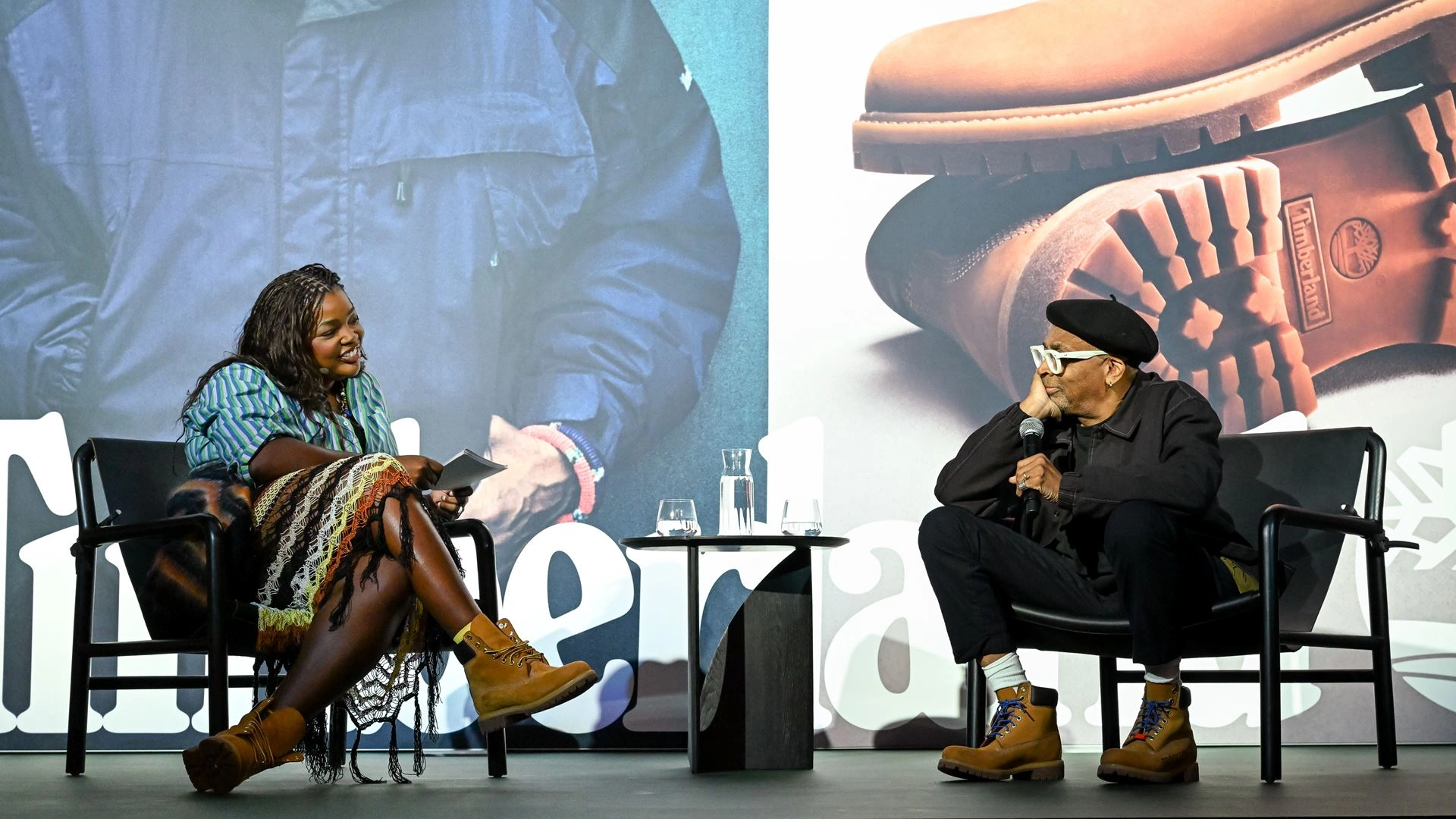
In the era of hyper-branded reality, when nearly every consumer touchpoint has been optimized for aesthetics and attention, the SKIMS diner feels—at first glance—like another fleeting moment in a sea of brand activations.
Mel’s Drive-In, decked out in soft millennial pinks and custom uniforms, a curated menu nobody’s really eating, influencers posting carousels with syrup drizzles and lip gloss. But to mistake this installation for a mere Instagram photo op is to miss the most important shift happening in consumer culture today.
Let’s be clear: this isn’t about pancakes. It’s about power. And SKIMS, the shapewear empire co-founded by Kim Kardashian, understands power in ways most legacy brands don’t. Because in 2025, we aren’t watching content—we’re joining tribes.
The Death of Product-First Thinking
Too many brands are still playing the old game: promote product, capture eyeballs, measure ROI through clicks and conversions. They’re optimizing for reach, while missing the greater force at play—resonance.
What SKIMS has mastered isn’t just performance fabric or viral campaigns. It’s identity choreography. It’s the transition from product to platform, from store to stage, from customer to cast member.
This is why the SKIMS diner matters. It’s not content. It’s a context. A living, breathing performance space where cultural mythologies—femininity, nostalgia, aspiration, indulgence—can be enacted in real time. It’s an initiation site for the SKIMS worldview.
Appetite Without Consequence: Bottling the “Cool Girl” Fantasy
In Gone Girl, Gillian Flynn’s now-famous “Cool Girl” monologue deconstructs the performative burden of idealized femininity. The “Cool Girl” eats burgers, downs beer, plays video games, and never gains weight. She’s effortlessly sexy, ever accommodating, and entirely fictional.
SKIMS didn’t quote Gone Girl. They didn’t have to.
The diner is a manifestation of that fantasy. You’re invited to indulge—but only performatively. You wear your SKIMS bodysuit, your skin is smooth, your waist cinched, your pose perfect. You sip a milkshake not for its sweetness but for its semiotic power.
This is appetite without evidence. You aren’t really eating; you’re performing consumption. The pancakes are props. The syrup glistens like highlight powder. It’s not about feeding your body—it’s about feeding the algorithm.
And yet, this isn’t cynical. It’s calculated brilliance.
Nostalgia as Trojan Horse
Mel’s Drive-In is a quintessential Americana fixture. Diners evoke the 1950s mythos: freedom, youth, sex appeal, Coca-Cola, and vinyl booths. They harken back to a “simpler” time, even if that time was never simple for everyone.
What SKIMS has done is recontextualize nostalgia. By painting Mel’s in soft pinks, swapping burger uniforms for sculpted SKIMS sets, and scripting a fantasy where femininity is frictionless, they tap into the warm fuzzies of the past—while rewriting its codes.
This is strategic. Nostalgia is a trust accelerant. It makes the unfamiliar feel familiar. But SKIMS doesn’t stop at comfort—they weaponize it. The past becomes a launchpad for a reimagined future where beauty is optimized and curated for the screen.
The Diner as Branded Stage
Think about it: the diner is adjacent to the SKIMS flagship store. That’s not accidental—it’s a threshold. The brand doesn’t just want you to buy something. It wants you to enter something.
In this space, every element is purposeful:
- Staff uniforms match product lines—turning servers into brand avatars.
- Menu design mirrors SKIMS color palettes.
- Custom booths are tailored for photo composition—framing visitors as protagonists.
- Soundtracks, lighting, staging—each amplifies the performance.
Customers aren’t there to dine. They’re there to enact the SKIMS fantasy. This is storydoing, not storytelling. Instead of broadcasting a message, the brand lets the customer live it.
The transaction is no longer monetary—it’s symbolic. You’re not just buying a $78 bodysuit. You’re buying permission to belong.
Belonging Is the New Branding
Over the last 18 months, a seismic shift has reshaped consumer behavior. People no longer seek products—they seek identity. In an age of fractured politics, post-pandemic loneliness, and digital overload, brands are stepping into roles once held by religion, civic groups, even family.
We don’t just shop for what we want. We shop for who we want to be.
SKIMS understands this. Their success is not built on necessity—shapewear isn’t essential. It’s built on aspiration, relatability, and permission. You can be indulgent without shame. You can sculpt yourself without apology. You can wear control garments and still feel free.
The diner cements that ethic. It’s not just an installation—it’s a rite of passage.
From Storefronts to Shared Worlds
Retail design used to be about flow and shelving. Now, it’s about cinematography. The SKIMS diner borrows cues from Hollywood sets, theme parks, and immersive theatre.
Why?
Because experience is currency. It’s what people remember, share, and align with. And in a world where everyone is both audience and actor, brands must offer a stage.
SKIMS isn’t the only brand doing this—but they’re doing it exceptionally well. Where others host pop-ups, SKIMS builds portals. Where others measure foot traffic, SKIMS orchestrates emotional resonance.
The Metrics Don’t Matter (That Much)
Let’s revisit the critique: influencer metrics, engagement scores, Instagram aesthetics.
Yes, they matter. But they’re not enough.
These are outputs—not outcomes.
What matters more is what the diner symbolizes:
- A brand that owns its narrative
- A space that transforms visitors into participants
- A product ecosystem that blurs the line between lifestyle and identity
In this framework, performance metrics are residuals. They follow—not lead—the strategy.
The Culture Playbook: What Others Can Learn
So, what can other brands take away from SKIMS’ diner activation?
- Move from storytelling to storydoing
Don’t just say who you are—create spaces where people can live that identity. - Design worlds, not campaigns
Think in universes. What does your brand look, sound, taste, and feel like? What are its rituals? - Offer initiation, not just invitation
Consumers want to belong. What’s the symbolic act that makes them part of your culture? - Nostalgia is powerful—but must be reinvented
Don’t recreate the past. Recode it through your brand’s lens. - Build adjacency
Place your branded experiences next to your point of sale. Let the emotional memory flow into the transactional moment.
The Post-Product Era
SKIMS doesn’t sell products. It sells transformation. You don’t buy shapewear to look different. You buy it to feel aligned—with an aesthetic, a tribe, a narrative.
This diner cements SKIMS’ position not as a fashion label but as a cultural architect. It’s not marketing—it’s myth-making. It redefines what it means to eat, pose, wear, and want in public.
Other brands still chase the old gods: awareness, impressions, conversions.
SKIMS builds a church. And the diner is its newest altar.
Impression
To say this is just a photo op is to misunderstand the entire movement of modern consumerism. This isn’t about pancakes. It’s about the performance of appetite, the ritualization of branding, and the emotional choreography of identity.
In 2025, the most successful brands will not be those with the best ads, the most followers, or the slickest products. They will be those who understand that culture is a system of belonging—and who build ritual spaces to house it.
No comments yet.









